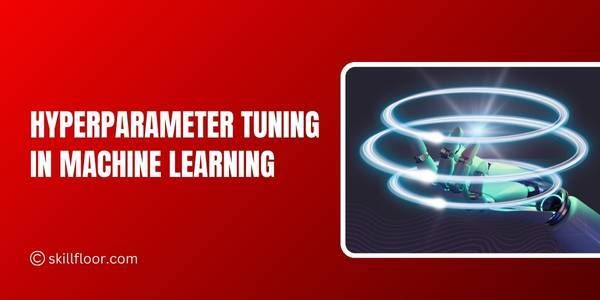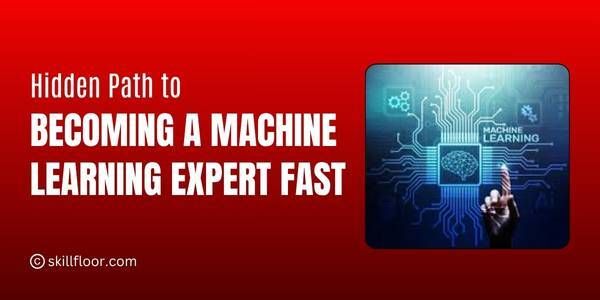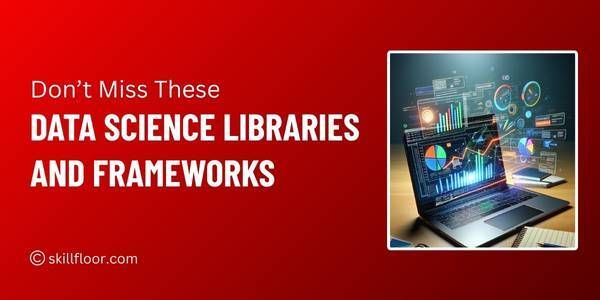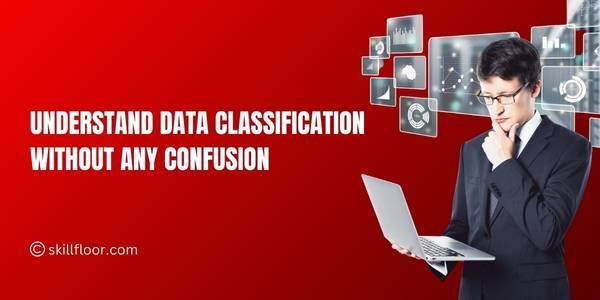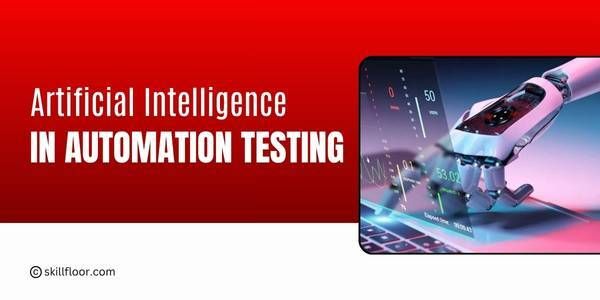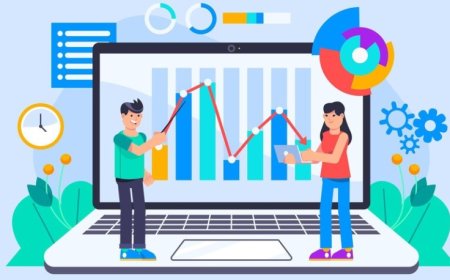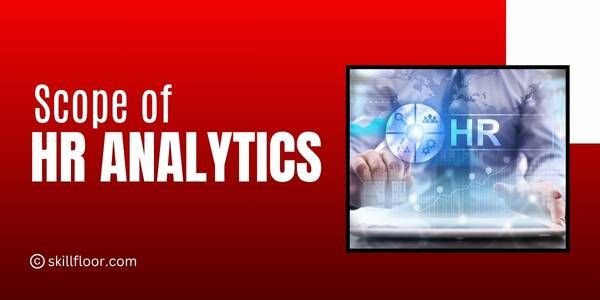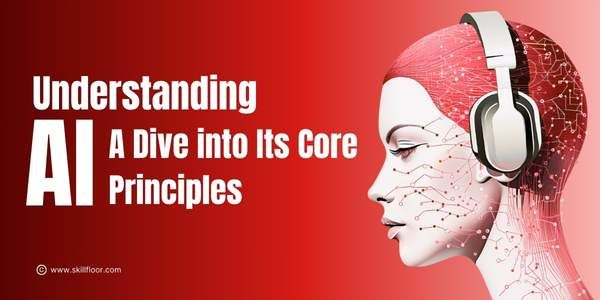Does Data Science Require Coding?
Discover if data science really requires coding. Learn essential skills, explore tools, and uncover career paths to thrive in data-driven roles, coding optional.
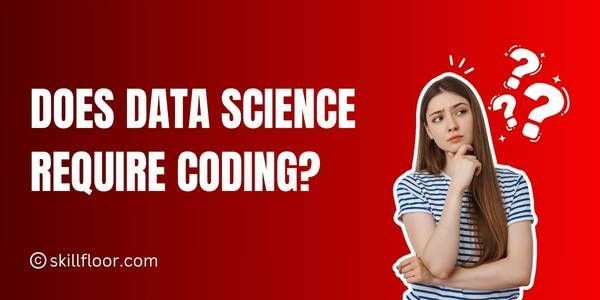
Is it possible to become a data scientist without ever writing a single line of code? With its high pay, interesting projects, and industry-wide influence, data science is booming. However, terms like Python, R, and SQL might make the ambition seem impossible.
If you've never done any programming, the idea of dealing with Python bugs or troubleshooting scripts late at night can feel really intimidating.
Here’s the truth: You don't need to be an expert programmer to be successful in data science. However, in this constantly evolving sector, knowing where coding fits and how to navigate it might mean the difference between stagnating and succeeding.
The Reality of Data Science: More Than Just Code
Coding is just one aspect of data science; another is using data to solve practical issues. In order to make meaningful judgments, core responsibilities include gathering and cleaning data, assessing insights, visualizing outcomes, creating prediction models, and conveying discoveries. At its core, it involves:
-
Collecting and Cleaning Data: To guarantee trustworthy and useful insights for any project, it is essential to collect raw data from many sources and convert it into precise, practical formats.
-
Analyzing and Visualizing Insights: Finding patterns, trends, and anomalies using statistical methods and visualization tools enables businesses to make more informed, data-driven decisions more rapidly.
-
Building Predictive Models: Creating and refining models that predict results, identify trends, or make decisions automatically, allowing companies to foresee obstacles and take advantage of opportunities.
-
Communicating Findings to Stakeholders: Converting intricate data insights into understandable, captivating stories that inspire action and guide strategic decision-making for leadership and teams.
-
Optimizing Business Processes: Using insights to boost productivity, cut expenses, and improve client experiences, transforming data into real effects at all organizational levels.
This toolbox contains several tools, coding being only one. Yes, it has a lot of power. You can work with large datasets and effectively build machine learning models with Python and R. But even in a data science course, you'll discover that there are other ways to get significant outcomes than coding.
Here’s a key stat:
-
India Data Analytics Market Size & Outlook, 2024‑2030” — shows the market reached USD 3,551.8 million in 2024 and projects growth at 35.8% CAGR from 2025–2030.
-
Data Science and AI Jobs Report 2025” — details how India’s data science/AI hiring landscape is shifting in 2025, including talent gaps and salary trends.
-
By fiscal year 2025, leadership roles in AI and data science in India saw a growth of 40‑60% compared to the prior year, signaling strong demand for senior talent.
Why Coding is Often Associated with Data Science
Most people picture someone writing R code or Python scripts when they think about data science. The reason for this is that coding helps in:
-
Automating Repetitive Tasks: Python and R scripts can rapidly clean, transform, and modify data, saving time, lowering human error, and greatly improving workflow efficiency.
-
Handling Large Datasets: Spreadsheets cannot process millions of rows across several datasets, but programming does, allowing for accurate and efficient big data analysis to meet data science objectives.
-
Implementing Advanced Algorithms: Predictive analytics, classification, and intelligent decision-making in real-world applications are made possible by machine learning models, which rely on programming to build algorithms, train models, and adjust parameters.
-
Data Integration Across Sources: Coding enables the efficient and reliable creation of consistent and analyzable datasets by merging, transforming, and connecting data from databases, external files, and APIs.
-
Custom Visualizations and Reports: Programming provides flexibility beyond pre-built tool restrictions for effective insight presentation by enabling the creation of interactive dashboards, charts, and reports customized to unique needs.
-
Reproducibility and Scalability: Scripts guarantee dependability and efficiency in enterprise-level data science jobs by enabling repeatable, version-controlled operations that may be scaled for bigger datasets or cooperative projects.
Python, R, SQL, and Julia are a few widely used languages in data analysis; each has its own advantages. For instance, SQL serves as the foundation for database queries, whereas Python is frequently used for machine learning.
Can Data Science Be Done Without Coding?
Yes. Many data science tasks, including data cleaning, analysis, visualization, and even creating simple predictive models, may now be completed without writing a single line of code thanks to low-code and no-code solutions. Some examples include:
-
Excel / Google Sheets: Without knowing how to program, use built-in functions, pivot tables, and formulas to perform computations, data cleansing, and basic analysis.
-
Tableau / Power BI: Make interactive visualizations and dashboards that let users examine data and come up with insights without knowing how to write code.
-
KNIME: Use a drag-and-drop interface to create processes for data preprocessing, modeling, and reporting that are perfect for non-programmers.
-
RapidMiner: Reduce the requirement for coding knowledge by using visual workflow design to complete machine learning and predictive analytics jobs.
-
DataRobot: By inputting datasets into the platform, which manages model development, assessment, and deployment without the need for human coding, you can automate machine learning.
-
Alteryx: Use a visual workflow interface to combine, clean, and analyze data from several sources, making complicated operations possible without the need for programming knowledge.
Business analysts and managers can now focus on gaining insights instead of coding, thanks to the automated model development and data cleaning capabilities provided by various no-code solutions. This approach allows teams to quickly test, develop, and generate valuable outcomes without requiring programming knowledge.
Additionally, by enabling non-technical stakeholders actively contribute in decisions based on data, these technologies improve collaboration. Organizations may successfully harness multiple viewpoints, expedite project deadlines, and democratize access to data across departments by eliminating coding barriers.
|
Pros of No-Code Tools |
Cons of No-Code Tools |
|
Beginner-friendly and easy to learn, requiring minimal technical knowledge. |
Limited flexibility for advanced analysis or custom solutions. |
|
Faster results for data cleaning, visualization, and basic modeling tasks. |
Less control over the underlying data processing and algorithms. |
|
Reduces the risk of syntax errors and coding mistakes. |
May not scale well for very large datasets or enterprise-level projects. |
|
Enables quick prototyping and experimentation without programming skills. |
Dependent on platform limitations; features may be restricted compared to coding. |
|
Allows non-technical users to generate insights and dashboards effectively. |
Integration with external systems or APIs can be limited or complex. |
|
Ideal for small projects, business reporting, and exploratory analysis. |
Advanced machine learning models or custom workflows often require coding knowledge. |
While developers and machine learning experts typically rely on coding to effectively handle complicated data processing, advanced modeling, and automated activities, no-code solutions are great for analysts or managers who need to produce insights and visualizations rapidly.
Exploring Coding vs. No-Coding Paths in Data Science
Coding-Heavy Roles
Uses programming languages like Python or R to analyze complicated information, create predictive models, and extract actionable insights, assisting firms in making data-driven decisions and efficiently optimizing strategies.
2. Machine Learning Engineer
Creates, develops, and uses AI systems and machine learning techniques; this requires sophisticated programming abilities to optimize models, automate procedures, and provide clever answers for practical business issues.
3. Data Engineer
Enables the smooth integration of datasets for analytics, artificial intelligence, and business intelligence applications; creates and maintains scalable data pipelines; maintains databases; and guarantees clean and organized data flow.
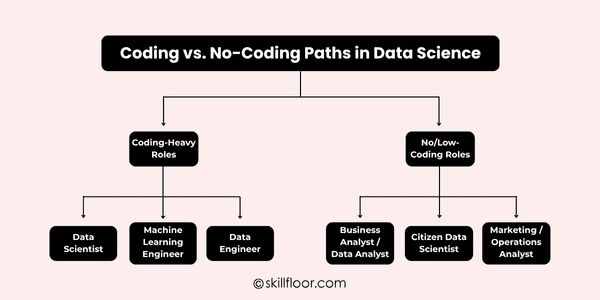
No/Low-Coding Roles
1. Business Analyst / Data Analyst
Uses tools like Excel, Tableau, or Power BI to gather, analyze, and visualize data without heavily relying on programming in order to produce meaningful insights.
2. Citizen Data Scientist
Makes complex analytics accessible to non-programmers by using low-code or no-code platforms like Alteryx or DataRobot to analyze data and build predictive models.
3. Marketing / Operations Analyst
Focuses on information rather than code and uses analytics tools and dashboards to monitor performance, optimize campaigns, and assist with strategic decision-making.
Coding: When It Truly Matters in Data Science
Coding becomes essential if the goal is data engineering, machine learning, or artificial intelligence. Building algorithms, optimizing models, automating operations, and turning complex data into practical, useful solutions all require programming abilities.
-
Building Predictive Models: Designing, testing, and implementing complex predictive models that predict trends, spot patterns, and offer useful information for crucial business choices is made possible by coding.
-
Optimizing Algorithms Efficiently: Programming skills helps in improving algorithms for speed, accuracy, and efficiency, guaranteeing that models function well on sizable datasets and provide dependable, superior results in practical applications.
-
Automating Data Pipelines: Coding makes it possible to create automated workflows that efficiently clean, transform, and transfer data, lowering mistakes and saving time for large-scale and repetitive data operations.
-
Integrating Multiple Sources: Coding is frequently necessary to guarantee correct formatting, transformation, and alignment for precise analytics when combining structured and unstructured datasets from many sources.
-
Customizing ML Workflows: Advanced projects frequently require customized solutions that go beyond typical tools; code is needed to execute special feature engineering, model selection, and evaluation procedures.
-
Deploying AI Solutions: Deploying models into production environments requires coding in order to enable scalable applications, real-time decision-making, and ongoing improvement monitoring.
Even so, you don't have to become an expert right away. Start with the fundamentals, such as Python for data manipulation and SQL for queries, and as your projects and responsibilities increase, progressively improve your skills in coding.
Skills That Matter More Than Just Coding
Critical thinking, creativity, and the capacity to transform data into insightful knowledge that informs actual business decisions are the things that code cannot replace.
-
Analytical Thinking: Asking the right queries, identifying trends, and successfully interpreting data to transform unprocessed information into useful, perceptive business decisions.
-
Storytelling with Data: Delivering insights in an understandable and persuasive manner so that stakeholders may take prompt, well-informed actions that affect company outcomes.
-
Business Acumen: Recognizing how strategy, operations, and revenue are impacted by analysis and making sure that insights produce quantifiable value in line with company priorities and goals.
-
Problem-Solving Skills: Applying knowledge to realistic problems, creating workable solutions, and streamlining procedures to effectively and efficiently satisfy company requirements.
-
Communication Skills: Converting complicated findings into clear, practical messages for non-technical audiences, guaranteeing comprehension, confidence, and team execution.
-
Curiosity and Creativity: Finding hidden trends, possibilities, and significant patterns requires open data exploration, "what if" inquiries, and creative thinking.
When you combine these with no-code tools or minimum coding knowledge, you'll be much more valuable than someone who just understands Python without any business context.
Data Science Made Simple: Tools That Make Coding Optional
-
AutoML Platforms: With tools like DataRobot, H2O.ai, and Google AutoML, you can create machine learning models without knowing how to write code. They automatically take care of feature engineering, model selection, and evaluation.
-
Drag-and-Drop Analytics Tools: Data preprocessing, analysis, and modeling may be done visually with tools like Alteryx, KNIME, and RapidMiner; no coding is needed.
-
No-Code BI & Visualization: Without knowing how to program, you can analyze data, build dashboards, and share insights using tools like Tableau, Power BI, and Looker.
-
Spreadsheet-Based Analysis: Data management, statistics, and visualization are made simple by sophisticated Excel or Google Sheets add-ons (such as Solver, Analysis Toolpak, or Google Data Studio integration).
-
Low-Code Python & R Interfaces: For more experienced users, tools like Orange Data Mining and Jupyter Notebooks with templates provide versatility while requiring little scripting.
-
Cloud-Based Data Science Platforms: AWS SageMaker, Azure ML Studio, and Google Colab are examples of services that offer graphical user interfaces (GUI) for data cleaning, model training, and deployment together with optional code for further customization.
Practical Tips for Learning Coding If You Decide To
-
Start with the Basics: Start with languages that are easy for beginners to learn, such as Python or SQL, and concentrate on comprehending grammar, data structures, and basic exercises to progressively develop a strong coding foundation.
-
Set Small Goals: To stay motivated and monitor progress without feeling overburdened, break learning down into doable activities like automating straightforward operations or building simple dashboards.
-
Practice Regularly: To reinforce learning and gradually boost confidence, set aside time every day or every week for coding challenges, mini-projects, or exercises.
-
Use Online Resources: Use sites like Coursera, DataCamp, or Skillfloor to gain access to organized classes, practical exercises, and real-world projects created especially for beginners.
-
Work on Real Projects: Use coding in real-world situations, such as dataset analysis or report automation, to hone skills, observe observable outcomes, and maintain interest.
-
Join a Community: Participate in study groups, forums, or coding communities to exchange ideas, ask questions, and get support from others who share your objectives.
Entering the field of data science can be confusing, particularly when words like Python, R, and SQL begin to appear frequently. But keep in mind that you don't have to start your trip with never-ending coding. Almost anyone interested and driven can start investigating insights, dashboards, and analytics without writing a single word due to the abundance of tools, visual platforms, and low-code solutions available today. Additionally, mastering the fundamentals of coding gradually might lead to new opportunities and increase the impact of your job. Therefore, the secret is to take small, steady steps, regardless of whether you rely on no-code technologies or choose to learn Python later. The answer to the question, "Does Data Science Require Coding?" is "not entirely." Curiosity, problem-solving skills, and using data to make judgments are more essential.





















